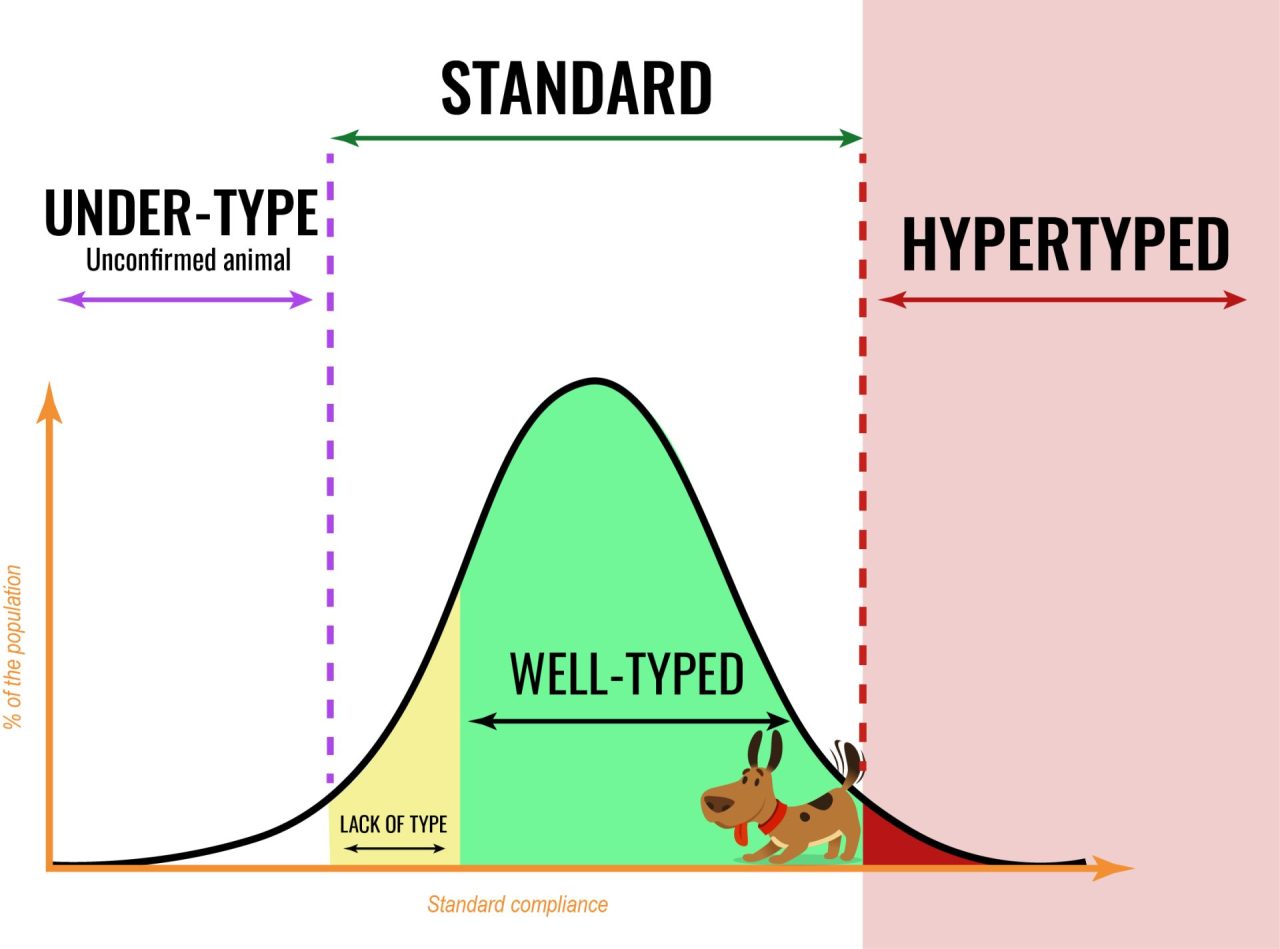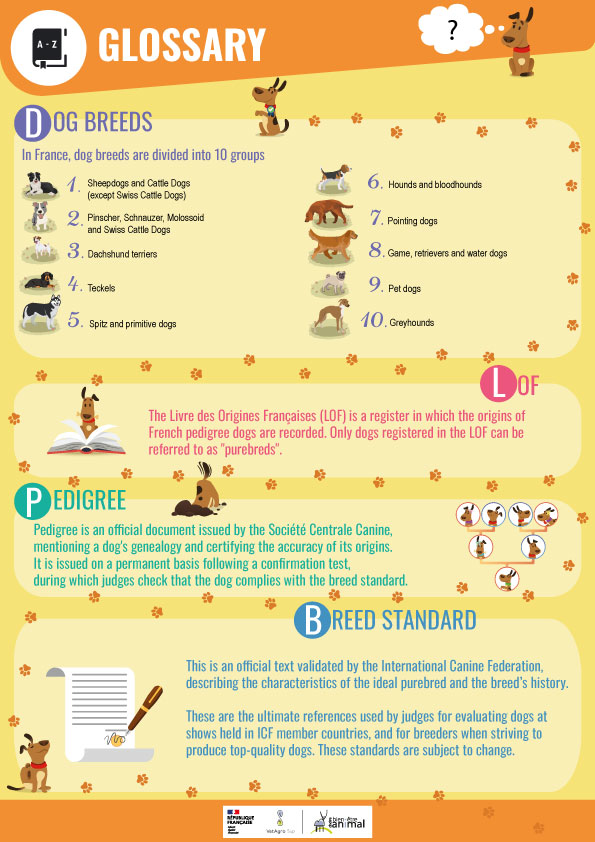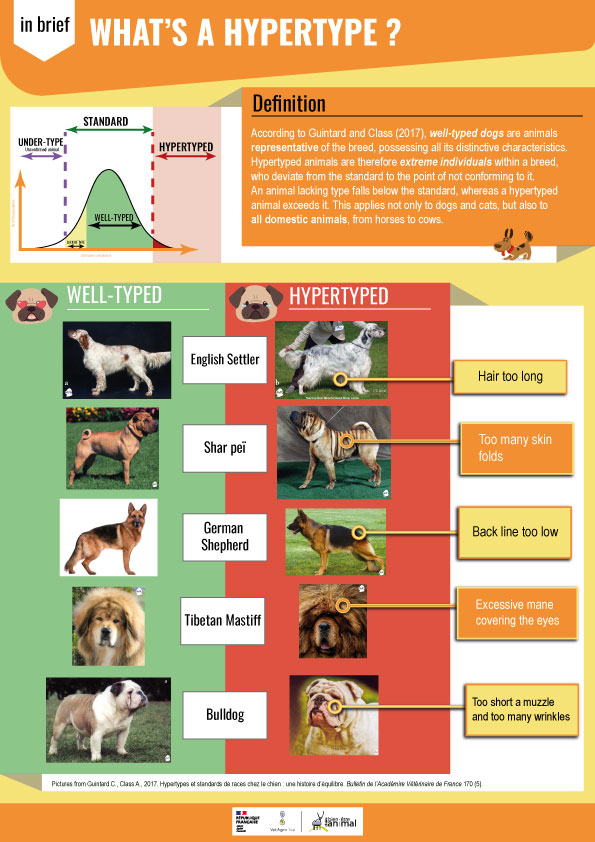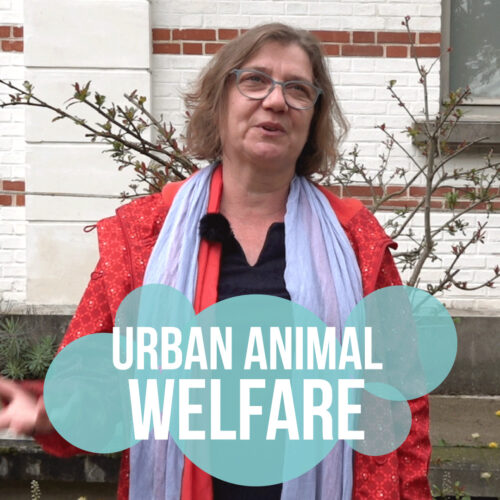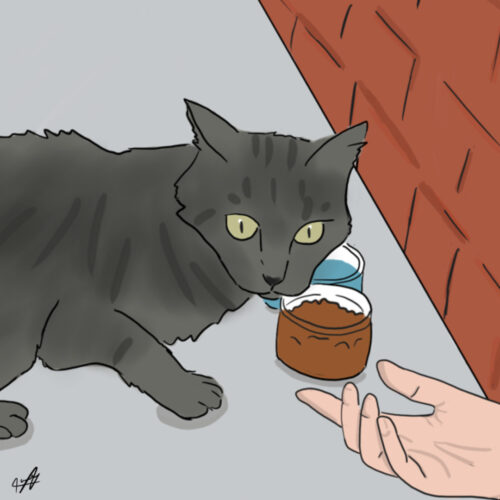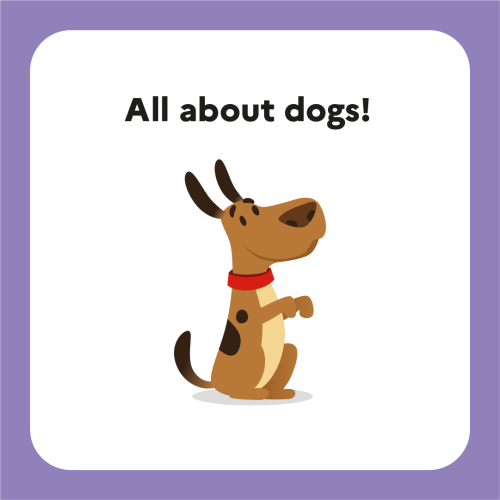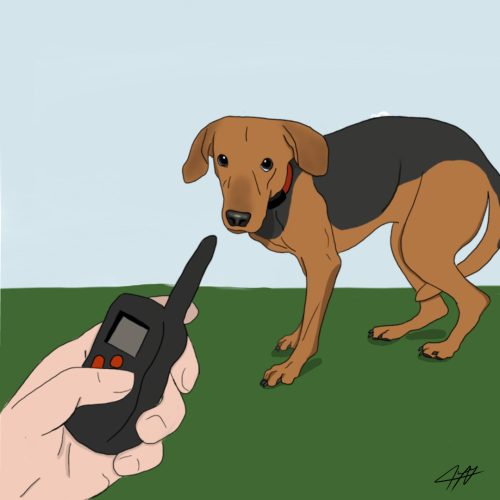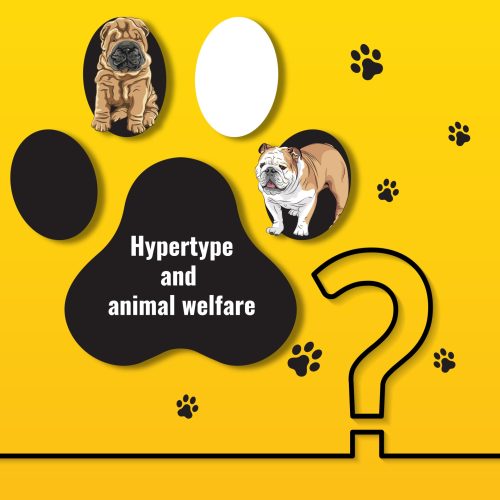
Norway recently enacted a ban on breeding Cavalier King Charles Spaniels, arguing that most of these dogs exhibit physical characteristics that are detrimental to their welfare (in this case, a skull that is too small to adequately accommodate their nervous system). For the Supreme Court that upheld the ban, most Cavaliers King Charles Spaniels appear to be “hypertypycal” to some extent. But what exactly is a hypertype? Is hypertype always harmful? Can hypertype really be associated with a particular breed? Here is what you need to know!

Keep in mind
- Hypertyped animals are extreme individuals within a breed, whose morphological characteristics deviate from the standard
- There are more and more hypertyped animals, and hypertype can be synonymous with animal suffering (respiratory, dental, calving problems, etc.)
- Hypertyped animals are more likely to be abandoned, particularly because of the costly care they may need
Norway recently enacted a ban on breeding Cavalier King Charles Spaniels, arguing that most of these dogs exhibit physical characteristics that are detrimental to their welfare (in this case, a skull that is too small to adequately accommodate their nervous system). For the Supreme Court that upheld the ban, most Cavaliers King Charles Spaniels appear to be “hypertypycal” to some extent. But what exactly is a hypertype? Is hypertype always harmful? Can hypertype really be associated with a particular breed? Here is what you need to know!
What is hypertype?
According to Guintard and Class (2017), a well-typed dog is representative of its breed, possessing all its distinctive characteristics. Hypertyped animals, on the other hand, are extreme individuals within a breed, who deviate from the standard to the point of not conforming to it. An animal lacking “type” falls below the standard, whereas a hypertyped animal exceeds it. This applies not only to dogs and cats but also to all domestic animals, from horses to cows.
For better understanding dog breeds vocabulary, read this glossary. It will help you understand the rest of this article:
Where do hypertypes come from?

In the case of purebred dogs and cats, standards define the desired characteristics in individuals. Inappropriate interpretation of these standards (by judges, breeders, owners, etc.) can lead to the selection of animals with exaggerations of the desired type. This is all about balance: the quest for well-typed animals should lead to the selection of neither animals lacking type, nor hypertyped animals. The quest for beauty can sometimes lead to a drift towards selecting animals that are extreme in type, i.e. hypertyped. According to Guintard and Class (2017), selecting animals with extreme characteristics will lead to hypertypes. In the beginning, and with habituation, the phenomenon can go unnoticed. But after several generations, a morphological change in the population is noticeable.
Why more and more hypertypes?
Why are we seeing more and more hypertypes?
Hypertype is a fashion on the rise. According to AFVAC (2019), hypertype is fueled by:
- A growing demand from pet owners looking for original companions or those with endearing or unusual characteristics (very small, very large…);
- The selection carried out by certain breeders who do not consider hypertype to be a selection error because hypertyped animals are easy to sell;
- Demand from the general public, and from show judges who reward certain animals that are extreme in type, and also by the use of hypertyped animals in advertising;
- The media hype surrounding these animals.
Hypertype and welfare
Is hypertype always detrimental to animal welfare?
According to Guintard and Class (2017), hypertype is not systematically synonymous with pain or disease. But sometimes, selection criteria taken to extremes are dangerous and can, in some cases, lead to animal suffering.
Consequences for the animal
What are the consequences of hypertype?
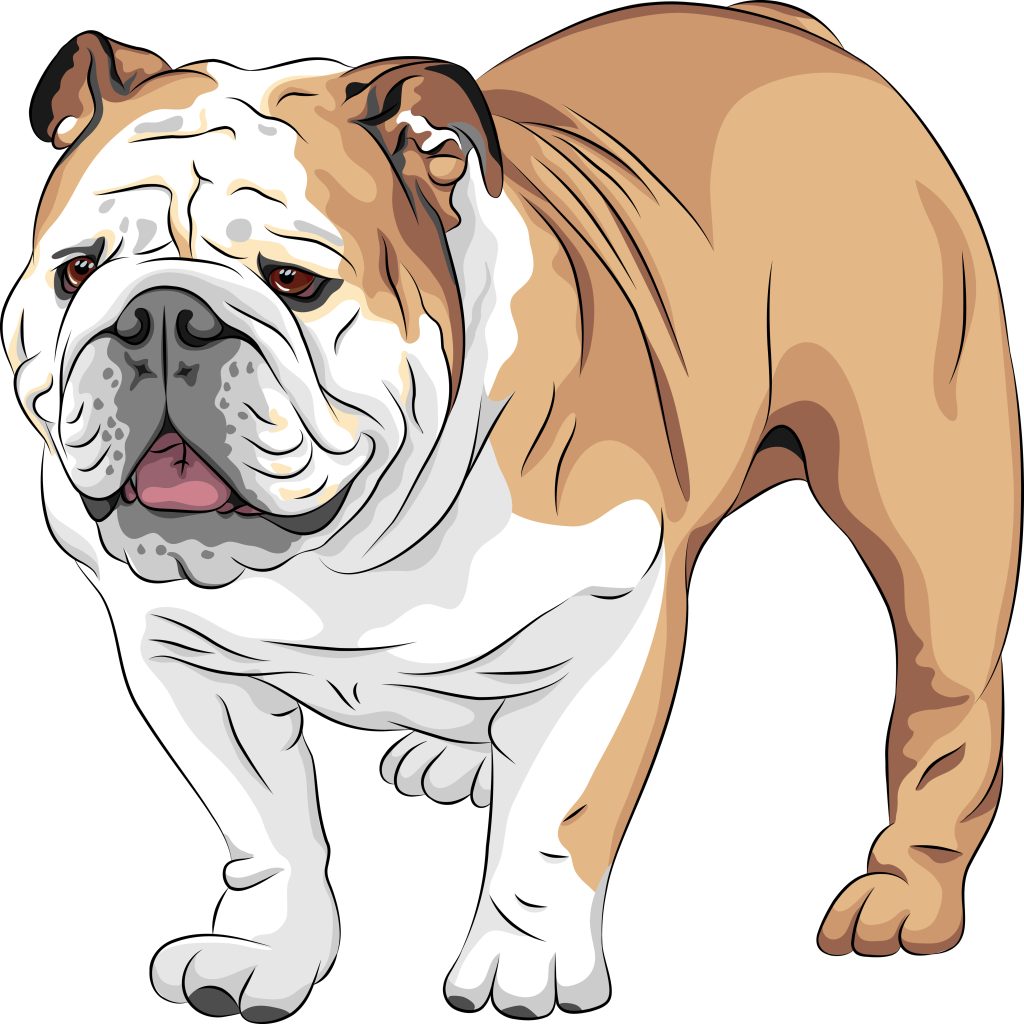
The consequences of hypertype are varied and depend on the character or characters that are exaggerated in the animal.
Hypertyped animals can suffer from respiratory problems, dental problems and whelping problems in females, in cases where the nose is too short and/or the head too round. According to Pacheteau (2020), brachycephalic breeds, with skulls that are wider than they are long, are particularly affected by this phenomenon. Examples of such breeds include the Persian cat, or the French or English bulldog.
Les animaux hypertypés peuvent souffrir de problèmes respiratoires, de problèmes dentaires, de problèmes lors des mises-bas chez les chiennes, lorsque le nez est trop raccourci et/ou la tête trop globuleuse. Selon Pacheteau (2020), sont très concernées par ce phénomène les races brachycéphales qui correspondent à des animaux aux cranes plus large que long. On peut citer comme exemples de races le persan pour le chat, ou chez les chiens le bouledogue français ou anglais.
Hypertyped animals can suffer from compression or malformation of the spinal cord when their cranial cavity is reduced. This is the case for breeds with neoteny, i.e. those reminiscent of a juvenile appearance (round head, large eyes), such as the Cavalier King Charles.
Some hypertyped animals have a tendency to corneal ulcers and eye dislocations due to their prominent eyes, as in hypertyped Pugs and Pekingese.
Hypertyped animals with a shortened, corkscrew tail are often associated with vertebral anomalies. These features are also found in hypertyped Pugs.
Locomotion difficulties are observed when the animal’s hind legs are too straight. One example is the hypertyped Chow-chow.
Back pain occurs when the back is too long and the legs are too short, which is most often the case with hypertyped Dachshunds and Basset hounds.
In extreme cases, a greater susceptibility to hip dysplasia and musculoskeletal problems is caused by an excessively down-sloping topline. This problem is also found in hypertyped German Shepherds.
Dermatitis, inflammation of the skin, can be caused by excessive folding of the skin. Generally observed in hypertyped Shar pei.
Hypertypes can also generate behavioral expression disorders. Hypertyped Dachshunds and Basset Hounds, for example, are unable to “play” bow. Sometimes, hypertyped animals lose the function for which they were selected in the first place. Overly long hair, for example, prevents the animal from fully expressing its hunting ability. This is the case of the hypertyped English Setter.
Here is a summary of hypertype and how to spot it in certain breeds of dog:
Consequences for the owner
Does hypertype impact owners?
According to Veterinary Dispatch (2019), the consequences of hypertype are also felt by owners, who may be forced to provide lifelong care and resort to costly surgery for their pets, such as soft palate resection – when soft palate is too long and hinders breathing in certain hypertyped brachycephalic dogs – or surgery for nasopharyngeal stenosis (narrowing of the nostrils) – when the animal has too small nostrils to breathe properly. It is also a societal problem, as hypertyped animals are more likely to be abandoned. As a result, the number of abandoned hypertyped animals is abnormally high.
Tackling this phenomenon
Tackling this phenomenon
According to AFVAC (2019), subjects should be selected according to type (breed standard conformation), and hypertype should be regarded as a selection error. Also, the suppression of advertising featuring hypertyped individuals should be encouraged, in order to reduce the desire for such animals, and to ensure that sales comply with legislation. The entire veterinary profession is also mobilizing to raise awareness of hypertype among pet owners. Everyone involved, from pet owners to breeders, veterinarians, professional associations, studbook federations, judges and the media, must work together to combat hypertype.
Download the infographics
To download the two sheets in pdf format
Text written by Claire Missana, student at VetAgro Sup, with additional proofreading by Marie Abitbol, veterinary surgeon and teacher-researcher in genetics, and the Chaire Bien-Être Animal team.
- GUINTARD C., CLASS A., 2017. Hypertypes et standards de races chez le chien : une histoire d’équilibre. Bulletin de l’Académie Vétérinaire de France 170(5)
- Dépêche vétérinaire numéro 1507 (2019) : https://www.depecheveterinaire.com/hypertypes-stopper-la-selection-d-animaux-en-souffrance_67974F7FB572B3.html
- Hypertypes : l’AFVAC s’engage contre les hypertypes (2019) https://afvac.com/l-association/dossiers/l-afvac-s-engage-contre-les-hypertypes
- website of FECAVA : Federation of European Companion Animal Veterinary Associations séction Healthy Breeding : https://www.fecava.org/policies-actions/healthy-breeding-3/
- Thèse morgane MICHEL (Lyon) « Hypertypes chez les chiens et chats de race »
- Article écrit par Maud LAFON dans supplément ASV du pointvétérinaire de juin 2018 « Hypertypes canins : un sujet d’importance vétérinaire »
- Article « Hypertypes : stopper la sélection d’animaux en souffrance » de décembre 2019 du pointvétérinaire
- Article « « Hypertypes : un fléau pour la santé des chiens et chats » par Claude Pacheteau
- Site internet de la centrale canine https://www.centrale-canine.fr/articles/le-lof
- Site internet de la fédération cynologique internationale : http://www.fci.be/fr/Presentation-de-notre-organisation-4.html
- Article de Claude PACHETEAU (2020) https://www.santevet.com/articles/hypertypes-un-fleau-pour-la-sante-des-chiens-et-chats
Keep in mind
- Hypertyped animals are extreme individuals within a breed, whose morphological characteristics deviate from the standard
- There are more and more hypertyped animals, and hypertype can be synonymous with animal suffering (respiratory, dental, calving problems, etc.)
- Hypertyped animals are more likely to be abandoned, particularly because of the costly care they may need
Key Figure
Dog breeds in France are divided into 10 groups

